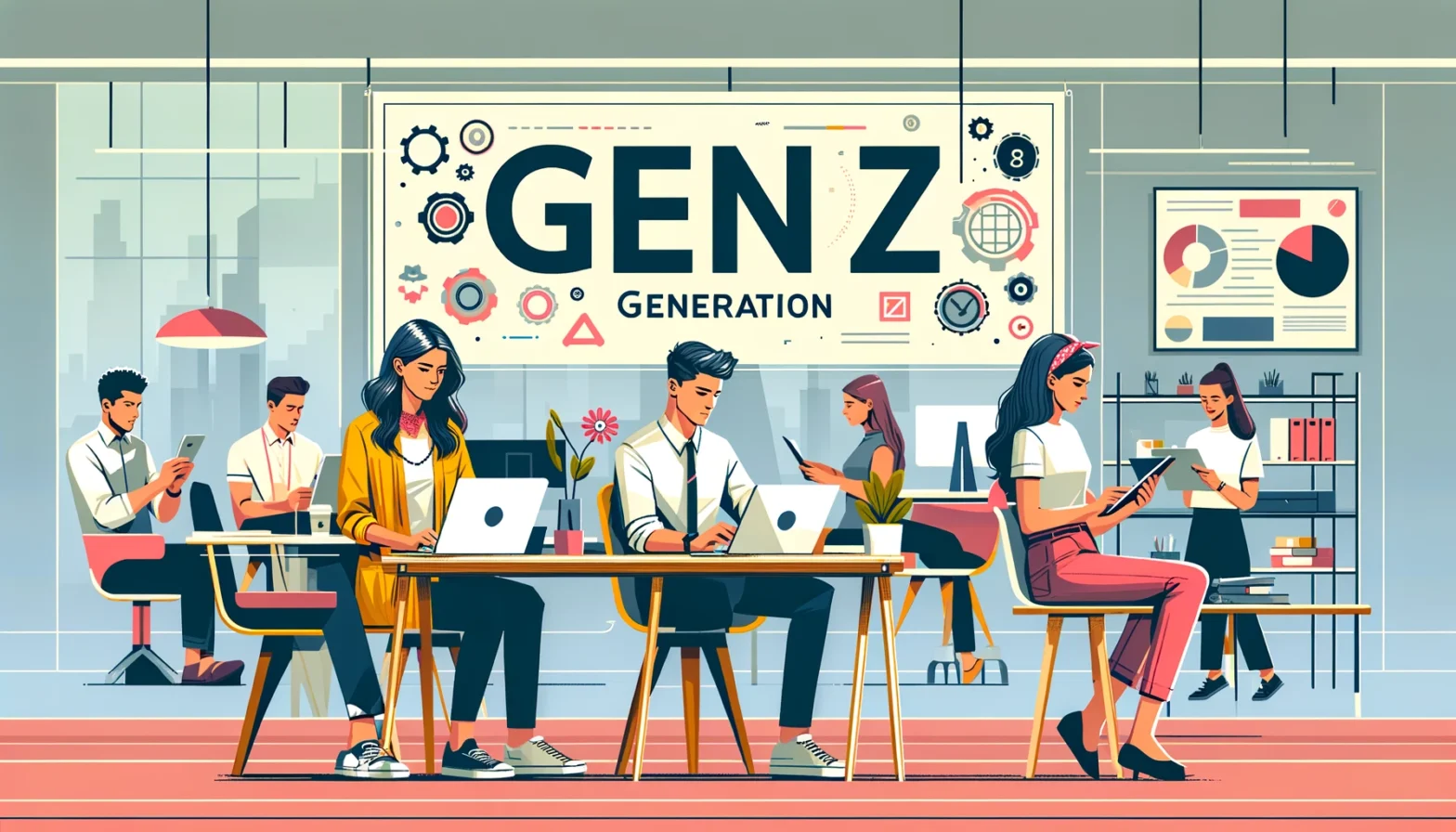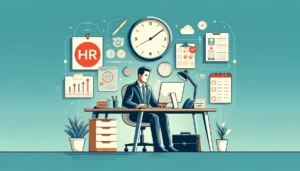Gen Z in the workplace: Decoding the newest powerhouse workforce
- 4 Min Read
Generation Z reshapes the workplace. This article explores their unique needs for flexibility, well-being, and tech integration. Learn how to bridge the gap and unlock their potential for a future-proof workforce.
- Author: HRD Connect
- Date published: Mar 13, 2024
- Categories

The workplace is in flux, and for leaders and HR departments, a new challenge has arrived: understanding and engaging Generation Z. Born between the mid-1990s and early 2010s, Gen Z isn’t just changing the demographic makeup of your office – they’re shaking things up entirely. With unique traits, expectations, and what makes them tick, Gen Z is redefining what it means to work.
Gen Z: Digital natives, disruptors, and changemakers
Generation Z brings a fresh perspective to the table, one that challenges traditional workplace norms. They’re digital natives – technology isn’t just familiar, it’s practically an extension of themselves. And guess what? They expect it to be seamlessly integrated into their work environment.
Growing up hyperconnected, they crave flexibility, including remote work options and adaptable schedules, to achieve that elusive work-life balance we all dream of. Inclusivity and diversity are top priorities for Gen Z, who seek workplaces that reflect these values not just in words, but in action.
They’re not just motivated by a paycheck; they want meaningful work that aligns with their values and offers opportunities to grow and develop. Unlike prior generations, Gen Z prioritizes mental health and well-being, expecting employers to be partners in creating a healthy work-life balance. Recognizing these characteristics is essential for organizations aiming to attract, engage, and retain this talented generation.
Bridging the gap: Strategies for engaging the powerhouse generation
To effectively engage Gen Z, leaders need strategies that bridge the gap between their expectations and current practices.
- First, ditch the lecture and embrace curiosity! Foster a culture of open dialogue where you actively explore what truly motivates Gen Z employees.
- Creating opportunities for intergenerational connection isn’t just feel-good – it fosters a more inclusive environment and bridges alignment gaps.
- Co-creation is crucial; by involving Gen Z in decision-making, you empower them and leverage their innovative potential for organizational growth.
- Reverse-mentoring programs can be a game-changer, facilitating mutual understanding and respect between generations.
- Finally, tapping into Gen Z influencers inside and outside the organization can offer valuable insights into building a future-ready workplace.
These strategies, working together, represent a proactive approach to unlocking the potential of Gen Z and transforming them into a powerhouse workforce.
Flexibility and wellbeing: The cornerstones of engagement
For Gen Z, flexibility and wellbeing aren’t just buzzwords – they’re the cornerstones of a positive work experience, significantly impacting engagement and productivity.
This generation views flexibility not as a perk, but as a fundamental right, valuing the autonomy to choose where and how they work. The post-pandemic era has solidified their preference for hybrid work models, allowing them to achieve work-life harmony.
Beyond flexibility, Gen Z prioritizes mental and emotional wellbeing. They seek supportive environments that acknowledge the impact of work on mental health and offer resources to manage stress effectively. Businesses can meet these needs by implementing flexible work policies, promoting a culture that prioritizes mental health, and providing access to wellbeing resources.
Addressing these aspects is crucial for attracting and retaining Gen Z talent, fostering a resilient and adaptable workforce that can thrive in the face of change.
Technology and innovation: Fueling the future
For Gen Z, technology isn’t just a tool; it’s an extension of themselves. They’re fluent in the digital language, and they expect their workplaces to speak it too. Employers can leverage this by adopting cutting-edge digital tools and platforms that facilitate collaboration, communication, and project management. But it doesn’t stop there!
Gen Z are brimming with tech-savvy insights, so create spaces for them to contribute their ideas. This can lead to innovative solutions and processes that benefit everyone. Furthermore, encouraging an entrepreneurial mindset, where calculated risks are embraced and creativity is nurtured, aligns with Gen Z’s desire for meaningful work. They want to challenge the status quo and drive progressive change.
By embracing these ideas, you can cultivate a dynamic work environment that fuels innovation and keeps your organization ahead of the curve.
Building the workplace of tomorrow
Generation Z’s integration into the workforce ushers in a transformative era for workplace culture and dynamics. To unlock their potential, organizations must prioritize flexibility, wellbeing, technology, and innovation. Leaders who understand and address Gen Z’s unique needs and values can create an engaging, inclusive, and forward-thinking work environment.
The strategies outlined in this article serve as a roadmap for bridging generational gaps and leveraging the strengths of Gen Z. As we look to the future, the ability to adapt and evolve with the changing.









